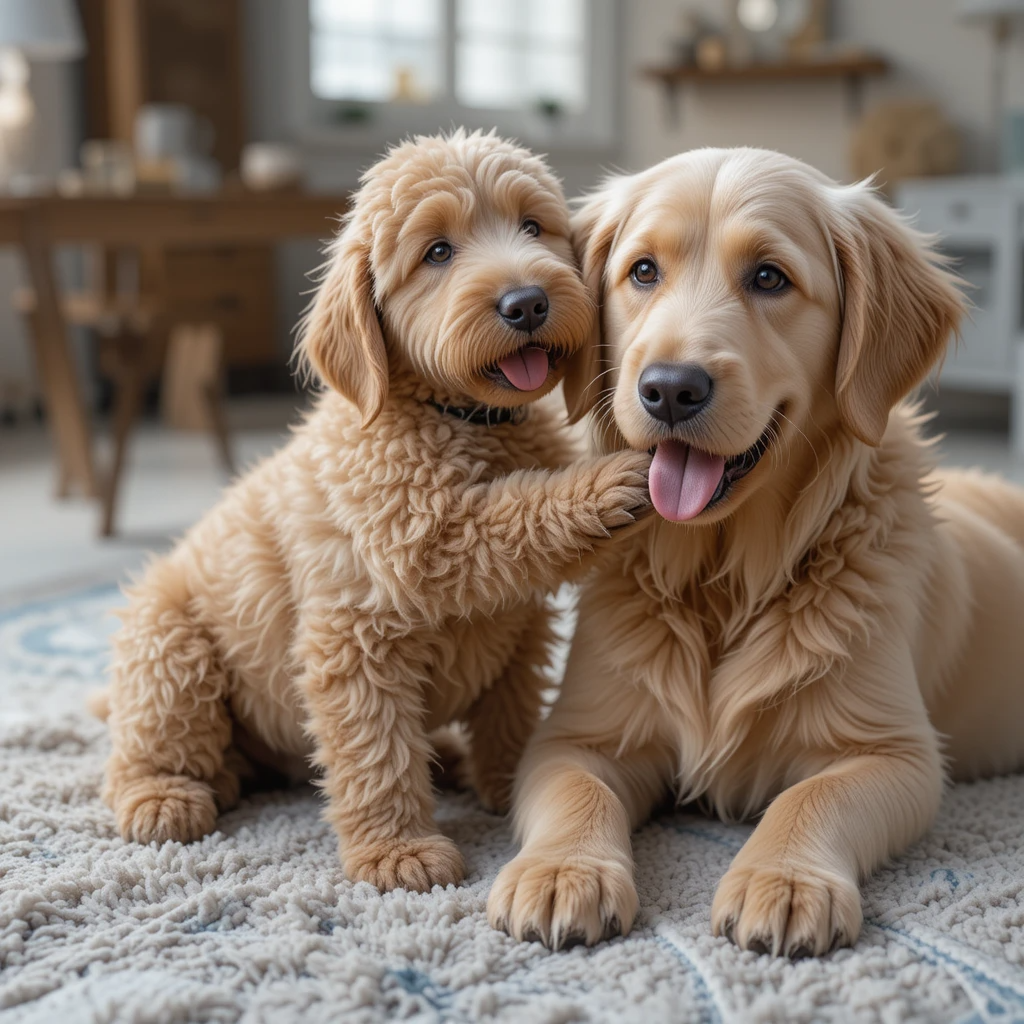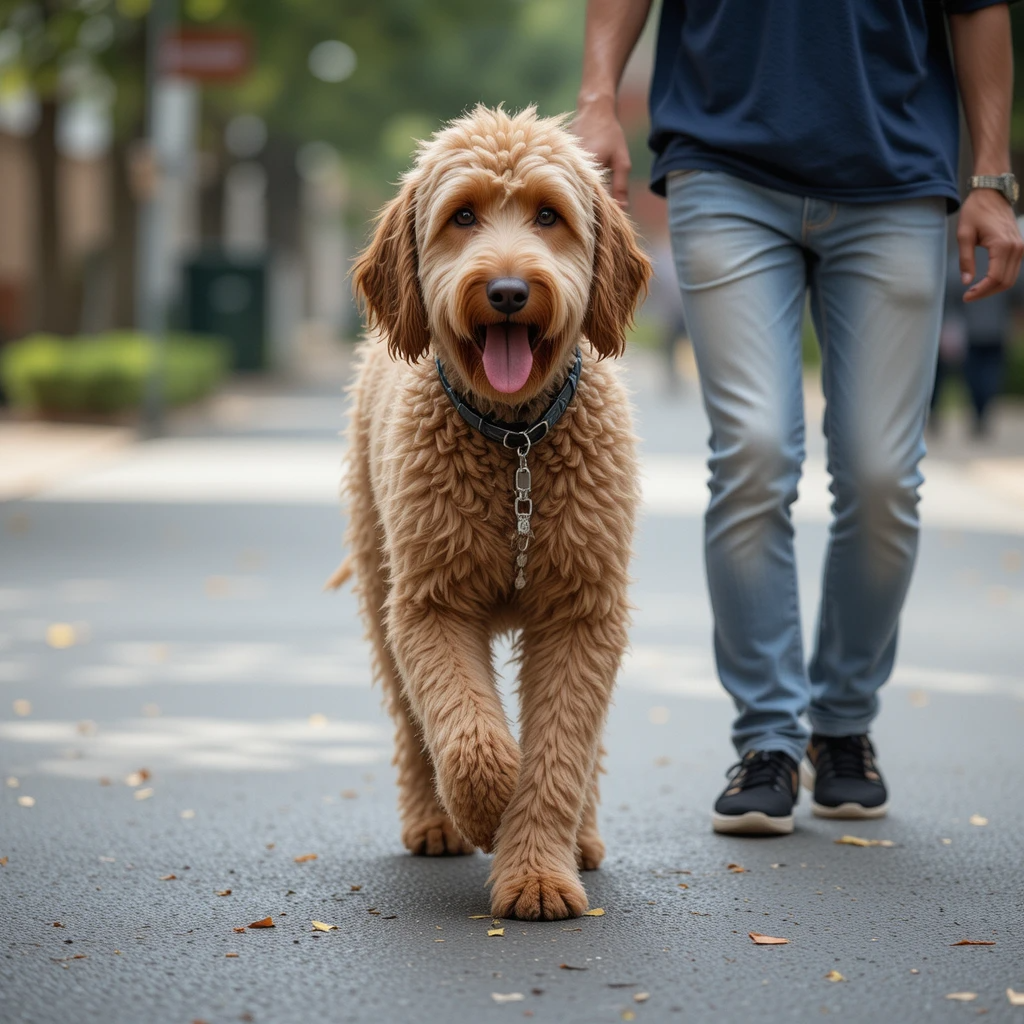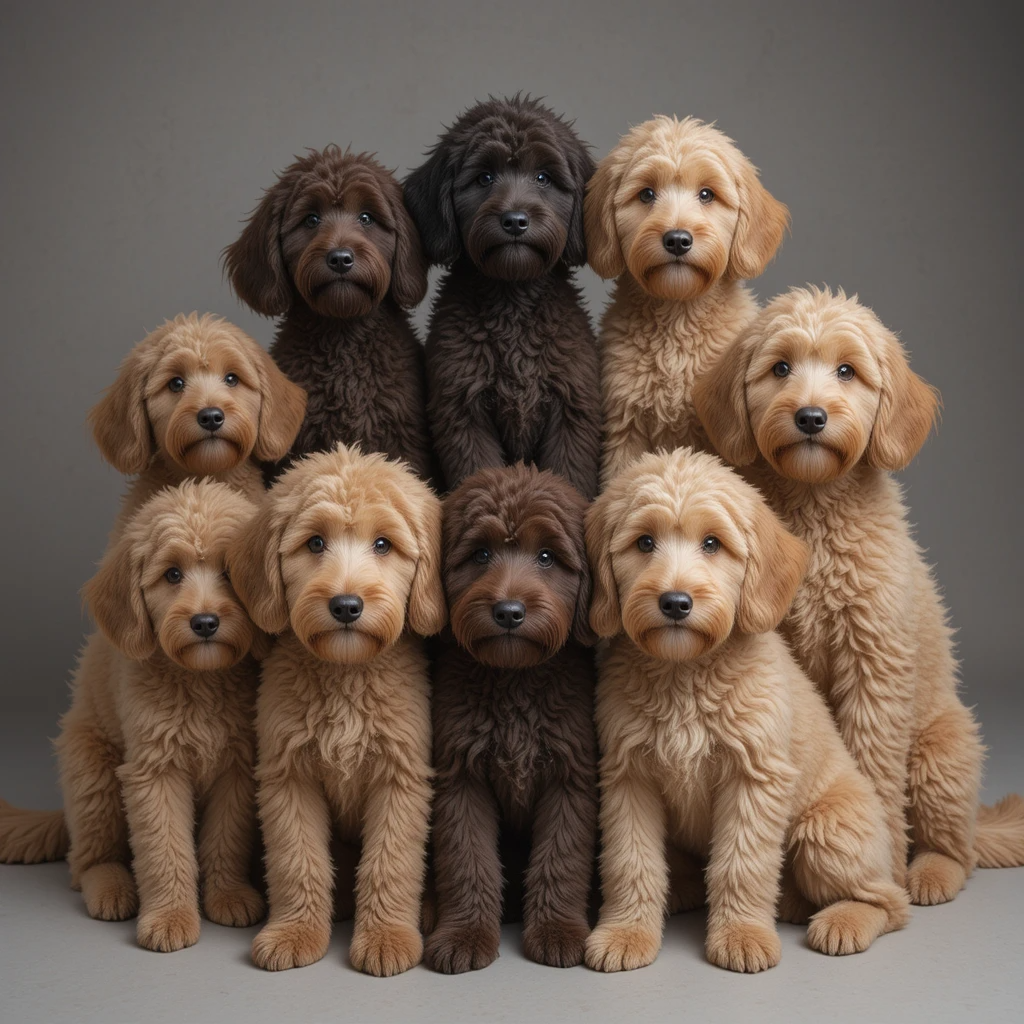F1b Labradoodles are a fantastic choice if you’re looking for a playful and low-shedding dog breed. These pups blend the best traits from the Labrador Retriever and Poodle, combining the friendly nature and hypoallergenic coat that many families love. With about 75% Poodle and 25% Labrador Retriever in their makeup, they are an excellent option for people concerned about allergies. From my experience, these designer dogs are not just adorable but also smart, loving, and easy to train.
Whether you’re a first-time pet owner or someone who’s had dogs before, the F1b Labradoodle makes a wonderful furry friend. Their unique characteristics and balance of energy and calmness make them a perfect addition to many homes. I can honestly say they bring a lot of joy and companionship, making the journey of raising one truly rewarding. If you want a dog that’s full of charm and easy on allergies, this breed should definitely be on your list.
Table of Contents

Understanding the F1b Labradoodle
The F1b Labradoodle is a special mix of 75% Poodle and 25% Labrador Retriever, giving you the best traits from both breeds. The “F1” means it’s the first generation mix, and the “b” stands for backcross, which means the dog is bred again with a Poodle to boost its hypoallergenic properties. This makes the F1b Labradoodle great for people who love dogs but struggle with allergies. You can expect them to have predictable traits like size and coat, which often comes in three types: wool (tight curls), fleece (soft and wavy), or hair (straighter like Labs).
These dogs usually live around 10-15 years, weigh between 50-65 pounds for males (females slightly lighter), and stand about 20-24 inches tall at the shoulder. What makes them truly special is their friendly personality and high intelligence — they are easy to train and love being around people of all ages. With their unique blend of charm and cuddly curls, F1b Labradoodles are not just pets but loyal companions full of energy and wit.
Caring for Your F1b Labradoodle: Essential Tips
Taking care of your F1b Labradoodle means paying close attention to their grooming and exercise needs. Because of their unique curly-haired coat—a perfect blend of Poodle and Labrador Retriever—regular brushing is key to prevent matting, ideally three times per week. Don’t forget the monthly baths to keep their coat clean and healthy. These dogs are full of energy, so a simple daily walk won’t do. They thrive on more active play, like fetch games and agility training, which helps keep their high-energy nature happy and balanced.
Nutrition is just as important, so feeding your furry friend high-quality dog food suited to their life stage—whether puppy, adult, or senior—is essential. Always check with your vet to ensure your Labradoodle’s nutritional needs are met. Regular vet check-ups are crucial for spotting any potential health issues early. Caring for your F1b Labradoodle takes effort and responsibility, but seeing their wagging tail and feeling those slobbery kisses makes it all worth it.
Benefits and Challenges of Owning an F1b Labradoodle
Owning an F1b Labradoodle comes with many benefits, especially their hypoallergenic coat which means they shed less, making them a great choice for people with allergies. These dogs have a friendly temperament, known for being sociable and loving, perfect companions for families or individuals. Thanks to their poodle lineage, they are very intelligent and enjoy lots of exercise, so they need a consistent exercise routine like playtimes and walks to stay happy and healthy.
However, owning an F1b Labradoodle also brings some challenges. Their beautiful curly or wavy coat needs regular grooming to avoid matting and tangling, so be prepared for frequent brushing. They can also develop separation anxiety if left alone too long, so active engagement is important. Their high energy levels require time and effort for proper care, but with patience and love, these challenges are worth it for such a loyal and joyful companion.
Is the F1b Labradoodle Right for You?
Deciding if an F1b Labradoodle is the right fit depends on your lifestyle and what you want in a pet. These hypoallergenic dogs have a heart full of love and plenty of energy to burn. They need regular exercise and mental stimulation, so if you enjoy long walks in the park or playing with puzzle toys, this breed could be perfect for you. They are a wonderful choice for families or individuals looking for a loyal four-legged companion who is smart and affectionate.
Before making a decision, think about your space at home, your daily lifestyle, and if you can manage the costs of pet insurance and regular vet check-ups. Remember, every dog has a unique personality, so meeting your future friend is key. If your heart is set on the F1b Labradoodle, prepare for lots of joy and happiness as this special breed will surely bring love and fun into your life.
What is a F1b Labradoodle?
An F1b Labradoodle is a first-generation backcross Labradoodle, created by crossing an F1 Labradoodle (50% Poodle and 50% Labrador Retriever) with a purebred Poodle. This results in a dog that is approximately 75% Poodle and 25% Labrador Retriever.
This generation is particularly popular among allergy sufferers due to its low-shedding coat and hypoallergenic traits, inherited from the Poodle parent. The increased Poodle genetics typically produce a curlier, denser coat, which reduces the amount of dander and loose hair in the home.
F1b Labradoodles are known for their intelligence, affectionate temperament, and trainability, making them ideal for families, therapy work, and first-time dog owners. Their balanced energy levels and social nature also make them excellent companions for children and active adults.
How big will a F1b Labradoodle get?
The size of a F1b Labradoodle depends largely on the size of the Poodle parent used in the backcross. They typically come in three size categories:
- Standard F1b Labradoodle: Weighs 50 to 75 pounds and stands 21 to 24 inches tall at the shoulder.
- Medium F1b Labradoodle: Weighs 30 to 45 pounds and stands 17 to 20 inches tall.
- Mini F1b Labradoodle: Weighs 15 to 30 pounds and stands 13 to 16 inches tall.
Because they carry more Poodle genetics, F1b Labradoodles often appear leaner and more refined, with tighter curls and a more athletic build. Growth typically slows around 12 months, with most reaching their full adult size by 18 months of age.

How much does a F1b Labradoodle cost?
The cost of an F1b Labradoodle can vary widely depending on the breeder’s reputation, location, lineage of the parents, coat type, and size. On average:
- Standard F1b Labradoodle: $1,500 – $3,000
- Mini or Medium F1b Labradoodle: $2,000 – $3,500
- Rare colors or multi-generational bloodlines: Can exceed $4,000
Other expenses to consider include vaccinations, microchipping, grooming, food, and vet care. Since F1b Labradoodles often require regular grooming due to their curly coats, grooming costs can also add up to $600–$900 per year.
Reputable breeders often include health testing, early socialization, and initial vaccinations in the purchase price, which helps ensure you’re getting a healthy and well-adjusted puppy.
What is the difference between F1b and F2 Labradoodles?
The main difference between F1b and F2 Labradoodles lies in their generation and genetic makeup, which significantly affects coat type, allergy-friendliness, and predictability.
- F1b Labradoodle = F1 Labradoodle × Poodle
➤ 75% Poodle, 25% Labrador Retriever
➤ More hypoallergenic, more curl-prone coat, ideal for allergy sufferers
➤ Higher coat maintenance due to tight curls - F2 Labradoodle = F1 Labradoodle × F1 Labradoodle
➤ 50% Poodle, 50% Labrador Retriever
➤ Less predictable coat types (wavy, straight, or curly)
➤ May shed more and may not be suitable for people with allergies
If you’re looking for a low-shedding companion with a curly coat and more Poodle-like appearance, the F1b is typically the better choice. However, if you prefer a slightly more Labrador-like temperament and coat with less grooming, an F2 might be suitable—though coat and allergy traits are less reliable in F2 generations.
Pumpkin for Labradoodle (Superfood( 18ways to Serve It!
6 Amazing Outdoor Adventures For Labradoodle in Autumn
Raising a Chocolate Labradoodle 23Tips&Facts(With Images)
Multigenerational Australian Labradoodle Latest Facts & Images 2025

